¶ Standard Operating Procedures
¶ IFR
| SID | SID Type | Pronunciation | Aircraft | Runway |
|---|---|---|---|---|
| JULNA2# | VOR/DME | Juliana | All | 10 |
| BOPAT# | RNAV (Hybrid) | Bopat | All | 10 |
| MODOR# | RNAV (Hybrid) | Modor | All | 10 |
| MULLT# | RNAV (Hybrid) | Mullet | All | 10 |
| PELCN# | RNAV (Hybrid) | Pelican | All | 10 |
Note: all SIDs require minimum visibility of 2.8SM and ceiling 1200ft or higher.
¶ IFR Clearance via SID
Clear all aircraft up to FL150
Examples:
Cleared to (airport) via direct, climb FL150, squawk 0101.
Cleared to (airprot) via direct TRNKY, flight plan route, climb FL150, squawk 0101.
Cleared to (airprot) via BOPAT2 departure, flight plan route, climb FL150, squawk 0101.
Readback correct, contact Tower for push and start.
If DEL is offline:
Readback correct, when ready pushback approved, runway 10, altimeter 2992, report ready to taxi.
¶ IFR Squawk codes
via Aurora or 0101-0177
¶ VFR Traffic
VFR Deaprture Example:
Southbound departure approved, VFR at or below 3000, squawk 1401.
VFR Local Pattern Example:
Pattern altitude 1000, expect right closed traffic runway 10, squawk 1401.
¶ VFR Squawk Codes
via Aurora or 1401-1477
- GND owns all active taxiways up to runway holding points.
- GND does not issue any runway backtrack insutrctions.
- Taxiway A and E are restricted to 737 and smaller aircraft
- Preferred inbound: D
- Preferred outbound: C
Phraseology Example:
Runway 10, taxi to holding point Alpha, report ready for departure.
Runway 28, taxi to holding point Charflie, report ready for departure.
Airport Diagrams:
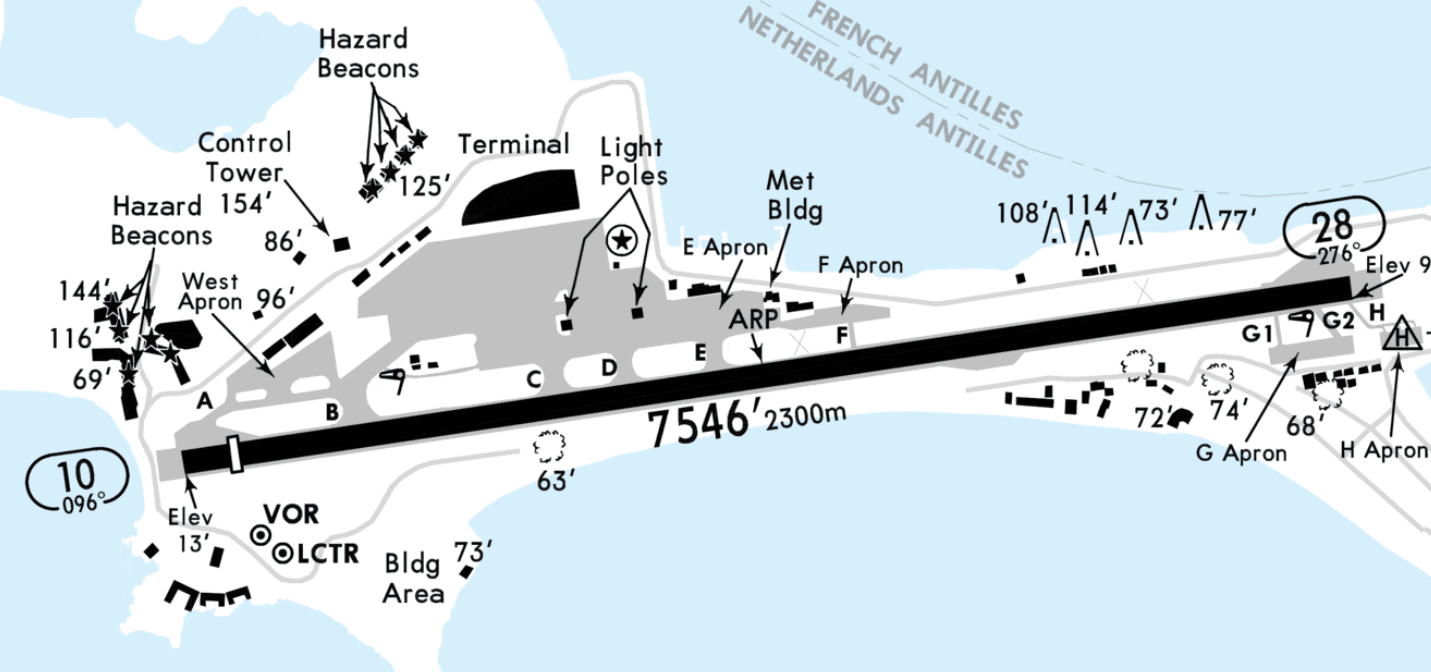
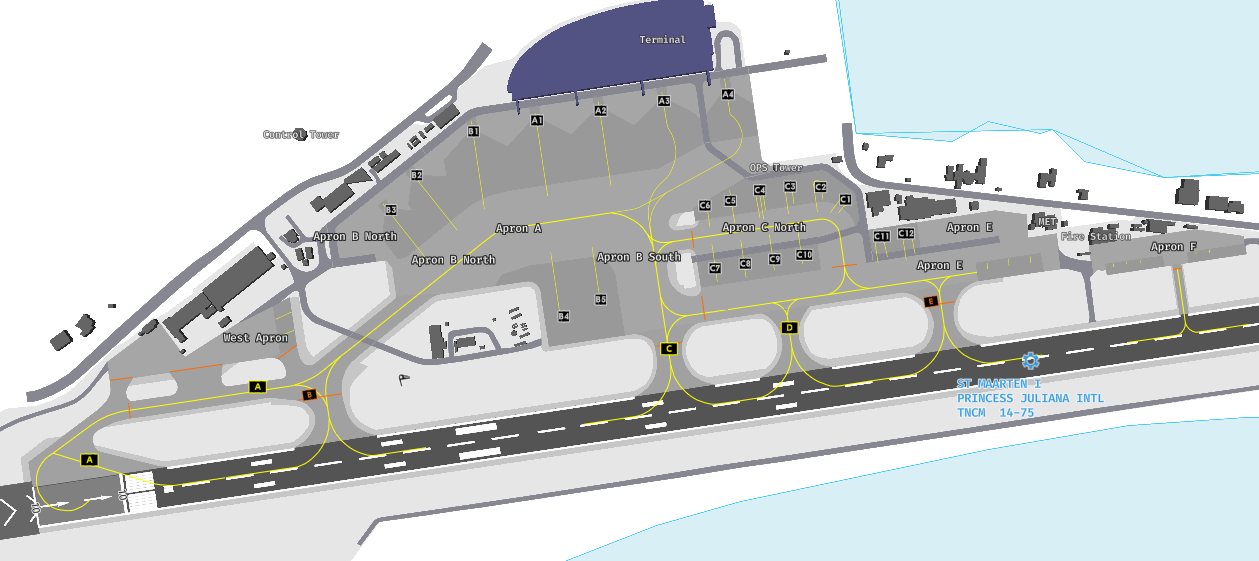
¶ Area of Responsibility
- Within the Class C airspace up to and including 3000ft MSL.
- TWR controls runway 10/28 at all times.
- TNCM is class C airspace (ICAO) View Sectional Chart
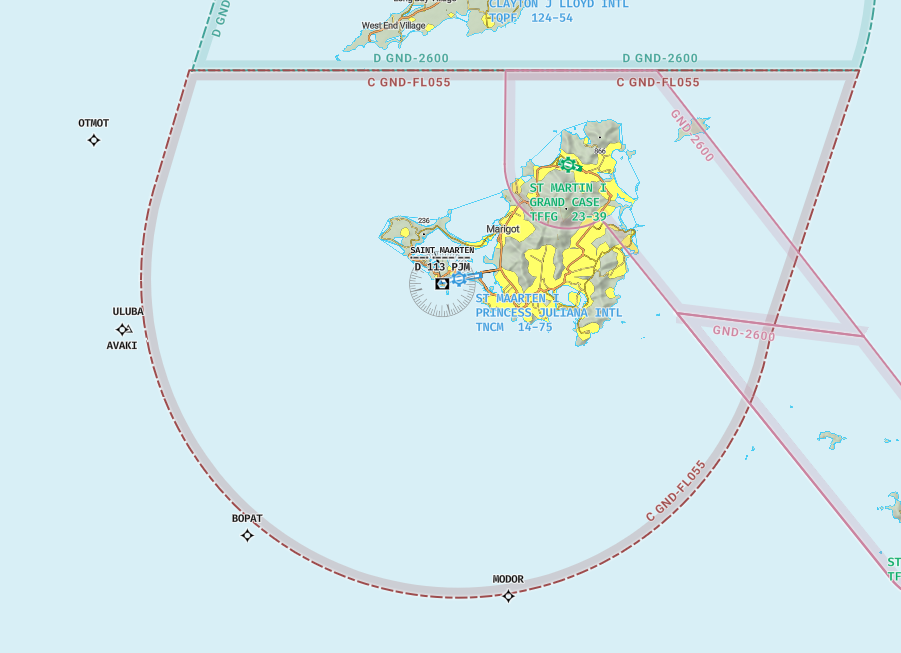
¶ Overview
- Overflight of populated areas below 2000ft MSL is prohobited.
- Overflight of beaches below 500ft MSL prohibited.
- Circling to land not authorized at this airport
- Helicopter traffic: instruct to land on rwy in use, vacate on taxiway H to H apron. Departures shall taxi via taxiway H and depart on rwy in use
¶ Operations
Runway 10:
- wind calm, preferred runway.
- right hand pattern only.
- jet aircraft expect RNAV 10 approach
- piston/turbo-prop expect visual approach rwy 10
- visual approach rwy 10:
- In general ask to report airport insight, then clear for visual approach. ATC can also instruct traffic to report a specific pattern leg if required for sequence. Once traffic is on downwind or final, landing clearance can be issued.
- Backtrack:
- After landing is complete instruct backtrack taxi clearance and taxiway to exit the runway. Use “expedite” if other traffic is on final inbound.
Runway 28:
- No straight-in instrument approach procedure available
- Turbulence and downdrafts may be encountered on approach between hills when strong winds are from the west.
- VMC conditions must exist to land
- Landing at night prohibited
- Departure from 28 at night is allowed for noise-abatement (jets only). Only if no inbounds are within 20NM.
¶ Phraseology Examples
Arrivals
- Runway 10 cleared to land, wind calm.
- Backtrack runway 10, vacate D, parking alpha 3.
Departures
- Behind landing traffic, line up and wait, runway 10.
- After departure fly heading 180, wind calm, runway 10, cleared for take-off.
¶ Runway configuration
Wind calm: East Ops
East Ops:
Departure: 10
Arrival: 10
West Ops (wind greater than 10kts):
Departure: 28
Arrival: 28
¶ Departure Headings
RWY10:
- North and eatsbound: heading 160
- Westbound: heading 180
RWY28:
- All - heading 280
Takeoff clearance example:
On departure fly headingg 160, wind, runway 10, cleared for take-off.
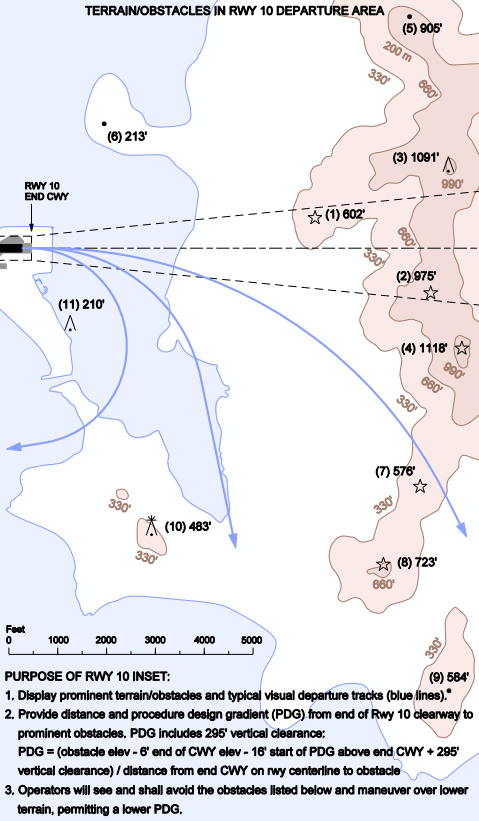
¶ Missed Approach & Go-arounds
Rwy 10 - hdg 180, climb 4000, contact approach
Rwy 28 - hdh 280, climb 4000, contact approach
¶ Area of Responsibility
- Juliana Approach starts at the minimum vectoring altitude (MVA) up to 15,000ft
- Jualian Approach handles TNCM and TQPF traffic.
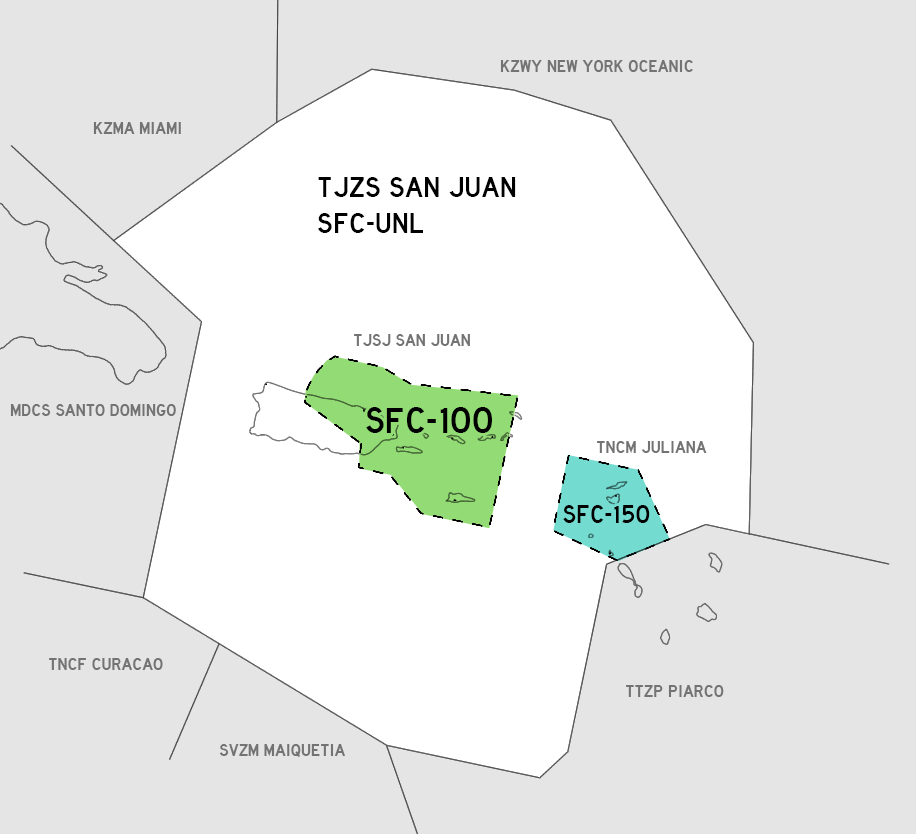
¶ General Operations
- San Juan Center controllers are allowed to provide full service to aircraft operating within the Juliana TMA if Juliana ATC is offline (i.e. TNCM_APP, TNCM_TWR, TQPF_TWR).
- San Juan Center controllers are encouraged to follow proper ICAO phraseology and procedures whenever controlling planes within the Juliana TMA.
- Many of the arrivals into Princess Juliana Intl. Airport (TNCM) will require a “backtrack” to vacate Runway 10. Given this operational constraint, we strongly suggest that controllers maintain 20 nm separation between successive arrivals into TNCM. This will allow for enough time for an aircraft to land and vacate the runway before the next arrival.
- Jualiana radar contacts all inbounds on their existing squawk code regardless if already identified by other CTRs
- Within the approach sectors aircrafts shall maintain a separation minima of 5nm and 1000ft lateral separation.
- Aircrafts departing the airspace should be sequenced in order to maintain 5nm separation.
- TNCM traffic expect RNAV 10 (jets) and Visual 10 (props)
- TQPF traffic expect RNP 11 (jets) and Visual 11 (props)
¶ Arrivals
- Arrivals to TNCM not assigned to a STAR shall be provided radar vector services and maintain 10 miles in trail (MIT) spacing constant between subsequent arrivals.
- Aircrafts arriving on a STAR shall descend to 2600ft by the final approach fix of ULBA or AVAKI.
- Aircrafts arriving via radar vectors shall proceed direct to the final approach fix for ULBA or AVAKI and descend to 2600ft after crossing the inbound fix. No aircraft may be cleared direct if it requires more than a 90° intercept angle.
- Arrivals shall be vectored for medium-traffic volumes, and receive holding instructions for high-traffic volumes.
- Lowest speed that can be issued is 170 knots (IAS)
- Missed approches right heading 140 (or direct ONBED), climb 4000. Or as directed by ATC>
¶ Holdings
It is recommended to ask CTR to hold aircraft outside of Juliana TMA at any of the ULUBA# transition fixes.
Juliana TMA Holding Stacks
| Fix | Course | Direction | Altitudes | Length |
|---|---|---|---|---|
| AVAKI | inbound 095 | Right Turns | 2600-10000’ | 4NM |
| ONBED | inbound 318 | Right Turns | 2600-FL150 | Standard |
| GABUL | inbound 136 | Left Turns | 2600-FL150 | Standard |
| PJM | inbound 308 | Left Turns | 2600-FL150 | Standard |
¶ Arrivals Crossing Restrictions
Aicraft will be cleared by San Juan CTR to descend when ready and cross fixes at the following altitudes:
FL110 at:
- ELOPO, ZPATA, DANDE, SLUGO, TRNKY, and MNOLO
FL70 at:
- GOUDA
¶ Radar vectoring and sequencing
RWY 10
Normally, aircraft will be vectored and sequenced to the appropriate final approach track for RNAV 10 so as to ensure an expeditious flow of traffic. Radar vectors, altitudes and speed restrictions will be issued, as required, for spacing and separating the aircraft so that correct landing intervals are maintained, taking into account aircraft characteristics.
Radar vectoring charts are not published since the instrument approach procedures and altitudes ensure that adequate terrain clearance exists at all times until the point where the pilot will resume navigation on final approach or executes a visual approach.
RWY 28
All IFR aircraft will be vectored for a Visual Approach RWY 28.
¶ MVA
View full chart here ad_2_tncm-23_radar.pdf
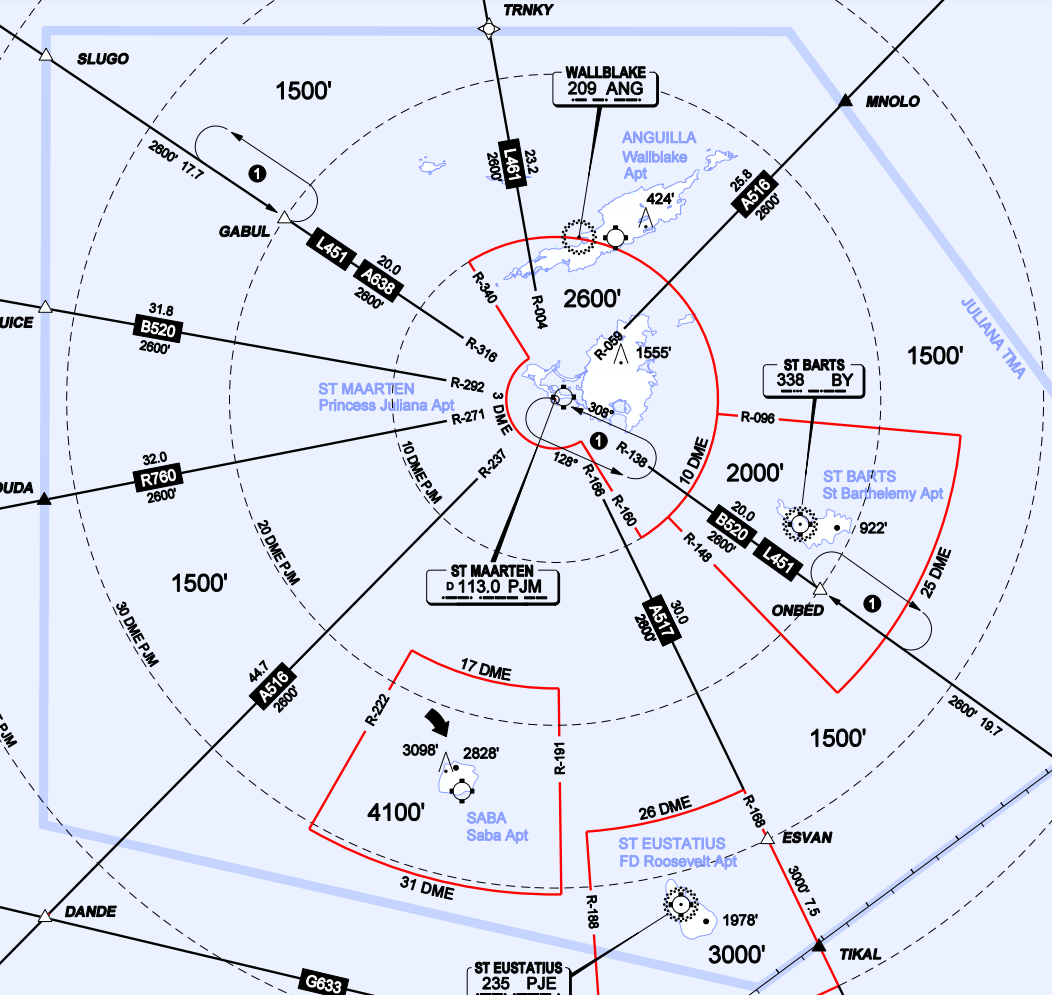
¶ Departures
- Juliana will send traffic direct to their first fix or onto an airway outbound of PJM VOR (if filed).
- Juliana will climb traffic to FL150 and hand-off traffic to CTR at FL100.
¶ Phraseology Examples
Arrivals:
- Altimeter 2992 expect vectors to final.
- Radar contact, descend 5000, vectors RNAV approach runway 10, information Golf is current, altimeter 2991.
- Descend when ready 4000.
- Speed 210 knots, you’re sequence number 3
- Descend 2600 feet, direct AVAKI.
- Turn left own navigation direct AVAKI, cleared RNAV 10 approach
- 14 miles from AVAKI, cleared RNAV 10 approach
- Contact Juliana tower, 118 decimal 7
Arrivals on visual approach:
- you are 10 miles from Juliana, join final approach course runway 10
Arrivals into uncontrolled fields:
- Provide Information:
- Runway 12 in use, wind calm, QNH 1012, temperature 15.
- Verify field in sight:
- Airport 12 o’clock, 10 miles, report in sight.
- Approach clearance:
- Cleared visual approach runway 12, report final.
- On Final:
- (Airport is uncontrolled) Report clear of the runway
Departures:
- Radar contact, turn left own navigation direct TRNKY
If route is PJM.B520:
- Radar contact, turn right and join the airway.
VFR requesting Flight Following
- Callsign, squawk 0110
- Callsign, radar contact squawking 0110, 12 miles from Juliana, (instructions), juliana altimeter 2991.
VFR Transfer/handoff:
- radar service terminated, squawk vfr, contact san juan center (freq).
- 15 miles SE of Juliana VOR, radar service terminated, squawk vfr, frequency change approved.